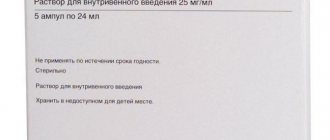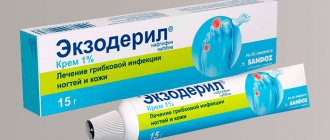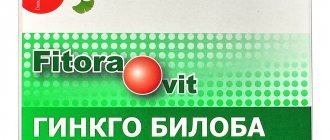Release form
- Solution for infusion: transparent, light yellow or yellowish-green (50 ml in a dark glass bottle, 1 or 10 bottles in a cardboard box).
- Concentrate for the preparation of solution for infusion: a transparent solution of yellowish-green color (20 ml in a dark glass ampoule, 5 ampoules in a tray, 1, 2 or 4 trays in a cardboard box).
- Film-coated tablets: oblong in shape, convex on both sides, light yellow in color with white and yellow inclusions of varying intensity, with marks on both sides; a cross-section shows a light yellow core (10 pcs. in a blister, 3, 6 or 10 blisters in a cardboard box.
Depending on the severity of the disease and other features, the doctor prescribes a different form of medication for each patient to use.
Price
Average price in Russia
The cost of Thiogamma is determined by the release form:
- 800-1000 rub. for a package of tablets;
- ampoules with solution for parenteral IV – 190 rub. per ampoule;
- liquid for droppers for intravenous infusions – 210 rubles. per bottle.
Average cost in Ukraine
Prices on the territory of Ukraine:
- 270-300 UAH. for a package of tablets;
- ampoules with solution for parenteral IV – 640-680 UAH. per packaging;
- liquid for droppers for intravenous infusions – 72 UAH. per unit of drug.
Video on the topic: Diabetic nephropathy. Treatment.
Compound
The concentrate for preparing the solution consists of the following components:
| Active substance | Auxiliary components | |
| Pills | Thioctic acid 600 mg | Hypromellose, colloidal silicon dioxide, microcrystalline cellulose, lactose monohydrate, carmellose sodium, talc, simethicone, magnesium stearate, macrogol 6000, sodium lauryl sulfate |
| Solution | Meglumine thioctate (equivalent to 600 mg thioctic acid) | Macrogol 300, meglumine, water |
| Concentrate | Meglumine thioctate (equivalent to 600 mg thioctic acid) | Macrogol 300, meglumine, water |
Thiogamma
Active substance:
Thioctic acid
Pharmgroup:
Vitamins and vitamin-like products
Average price in pharmacies
| Name | Manufacturer | average price |
| Thiogamma 0.012/ml 50ml n1 bottle solution d/inf | Solupharm Pharmazoitische Erzeugnisse GmbH | 211.00 |
| Thiogamma 0.012/ml 50ml n10 bottle solution d/inf | Solupharm Pharmazoitische Erzeugnisse GmbH | 1798.00 |
| Thiogamma 0.6 n30 tablet p/film/shells | Dragenopharm Apotheker Püschl GmbH | 903.00 |
| Thiogamma 0.6 n60 tablet p/film/shells | Dragenopharm Apotheker Püschl GmbH | 1742.00 |
Analogs for the active substance:Berlition 300 Lipoic acid Lipothioxone Octolipen Thioctacid 600 Thioctacid 600 T Thioctacid BV Thiolepta Thiolipon Espa-lipon | Application area:Pain syndrome in diabetic neuropathy Pain due to diabetic neuropathy Pain due to diabetic polyneuropathy Severe vascular complication of diabetes Diabetes Diabetic polyneuropathy Diabetic asthenia Diabetic neuropathy Diabetic neuropathic ulcer of the lower extremities Diabetic neuropathy Diabetic polyneuropathy Diabetic polyneuritis Thyroid dysfunction Diabetic neuropathy Obesity due to diabetes Peripheral diabetic polyneuropathy Diabetic polyneuropathy Diabetes Sensorimotor diabetic polyneuropathy |
Pharmacological properties
Pharmacodynamics
The active ingredient of the drug is thioctic (alpha-lipoic) acid. It is an endogenous antioxidant that binds free radicals.
Thioctic acid is formed in the body during the oxidative decarboxylation of alpha-keto acids. It is a coenzyme of multienzyme complexes in mitochondria and is involved in the oxidative decarboxylation of alpha-keto acids and pyruvic acid.
Alpha lipoic acid helps reduce blood glucose levels, increase glycogen concentrations in the liver and overcome insulin resistance. According to the mechanism of action, it is close to B vitamins.
Thioctic acid regulates carbohydrate and lipid metabolism, improves liver function and stimulates cholesterol metabolism. It has hypolipidemic, hypoglycemic, hepatoprotective and hypocholesterolemic effects. Helps improve neuron nutrition.
When using the megluminic salt of alpha-lipoic acid (has a neutral reaction) in solutions for intravenous administration, the severity of side effects can be reduced.
Pharmacokinetics
Indications
- diabetic neuropathy;
- alcohol damage to nerve trunks;
- liver diseases - hepatitis and cirrhosis of various origins, fatty degeneration of hepatocytes;
- peripheral or sensorimotor polyneuropathy;
- intoxication with severe manifestations (for example, salts of heavy metals or mushrooms).
Thiogamma is a drug also intended for the treatment of polyneuropathy (diabetic and alcoholic).
Directions for use and dosage
According to the instructions for use, Thiogamma tablets are recommended to be taken 1 hour before meals, without chewing, swallowing, and drinking a small amount of purified water. The drug should not be used during meals. The course of treatment ranges from 30 to 60 days (the exact duration is prescribed by the doctor), the recommended daily dose is 600 mg (1 pill).
The medication is used intravenously for droppers for 2–4 weeks, administering 600 mg once a day. Then patients are prescribed an individual course of Thiogamma tablets.
Contraindications
- childhood;
- period of pregnancy and breastfeeding;
- severe dysfunction of the kidneys or liver (especially jaundice of any origin);
- acute period of myocardial infarction;
- decompensated stages of cardiovascular or respiratory failure;
- gastric ulcer or severe hyperacid gastritis;
- dehydration and exicosis;
- chronic alcoholism;
- decompensated form of diabetes mellitus;
- acute cerebrovascular accidents;
- predisposition to the development of lactic acidosis (in particular for forms of the drug intended for parenteral administration);
- glucose-galactose malabsorption for tablets.
special instructions
Impact on the ability to drive vehicles and operate machinery
The instructions do not contain data on the negative effect of the drug on psychomotor reactions.
Pregnancy and lactation
The list of contraindications noted by the manufacturer includes breastfeeding and pregnancy. If this restriction is violated, there is a risk of negative symptoms that can worsen the condition of not only the woman, but also the fetus (or a newborn child, if the medication is taken during lactation).
Use in childhood
Contraindicated.
For impaired renal function
There are no nuances of using the drug for kidney diseases.
For liver dysfunction
Thiogamma is intended for the treatment of liver diseases.
Conditions for dispensing from pharmacies
The sale of the drug is carried out on a prescription form.
Side effects
During clinical trials, based on patient feedback, the following side effects were observed in some cases:
- the appearance of eczema, severe itching, various types of rashes;
- feeling of discomfort, urticaria, anaphylactic shock;
- headache, dizziness, excessive sweating, loss of consciousness;
- convulsions, epileptic seizure;
- pinpoint hemorrhages on the mucous membranes.
The above adverse reactions occur as a result of exceeding the dosage or individual intolerance to the drug.
If you notice that you have unpleasant symptoms: you need to stop taking the medication, immediately consult a doctor for symptomatic therapy.
Reviews
According to reviews, Thiogamma is popular among people with a predisposition to neuropathies and patients suffering from diabetes. People who have used this drug note that there is no need to be afraid of side effects, because the degree of their manifestation is classified as very rare.
Not only patients, but also pharmacists and doctors are satisfied with Thiogamma. That is why the drug is actively used in hospital settings. The possible chance of increased concentration of components or overdose is minimized due to the first pass effect, and rare side effects are controlled with medication.
Drug interactions
- ethanol and its metabolites: the effect of thioctic acid is weakened;
- cisplatin: its effectiveness decreases;
- glucocorticosteroids: their anti-inflammatory effect is enhanced;
- insulin, oral hypoglycemic drugs: their effect is enhanced.
Thioctic acid binds metals (iron, magnesium), therefore, if simultaneous use of drugs containing them is necessary, at least 2-hour intervals between doses should be observed. Thioctic acid reacts with sugar molecules [for example, with a solution of levulose (fructose)], resulting in the formation of sparingly soluble complexes.
In the form of an infusion solution, Thiogamma is incompatible with solutions that react with disulfide and SH groups, Ringer's solution and dextrose solution.
Pharmacokinetics
Suction
After oral administration, thioctic acid is quickly and almost completely absorbed from the gastrointestinal tract. When taken simultaneously with food, absorption of the drug is reduced. Tmax is 40-60 min. Bioavailability - 30%.
With intravenous administration, Tmax is 10-11 minutes, Cmax is 25-38 mcg/ml, AUC is 5 mcg × h/ml.
Distribution
Vd - about 450 ml/kg.
Metabolism
Subject to a first-pass effect through the liver. The formation of metabolites occurs as a result of side chain oxidation and conjugation.
Removal
Thioctic acid and its metabolites are 80-90% excreted by the kidneys. T1/2 is 20-50 min. Total plasma clearance is 10-15 ml/min.
Analogs
Thiogamma analogues make up a fairly large group of pharmaceuticals, because the therapeutic effects they provide are now extremely in demand. It is much easier to use medications to prevent severe neuropathies than to treat them later in a conservative way, undergoing a long and exhausting course of drug therapy.
So, along with Thiogamma, the following are used: Berlition 300, Neurolipon and Octolipen.









